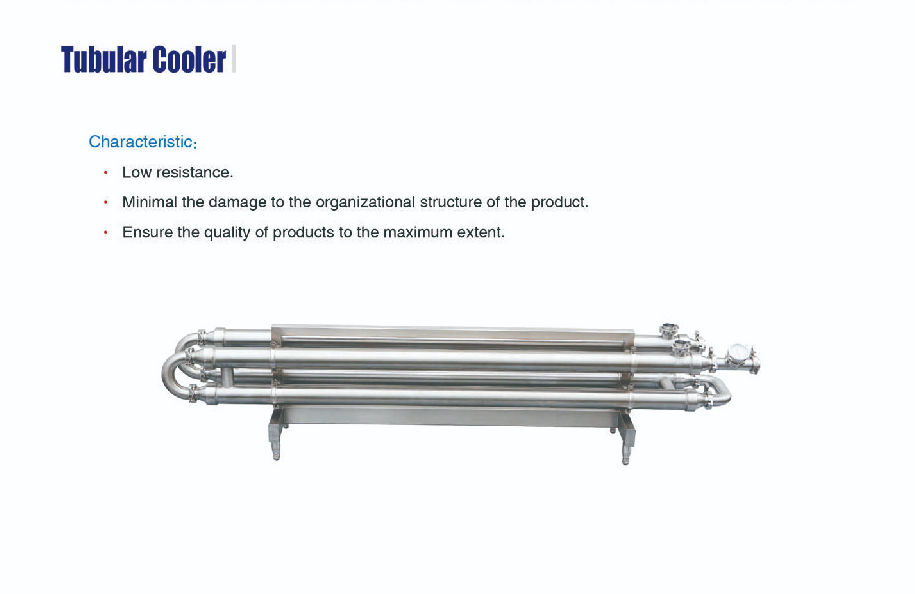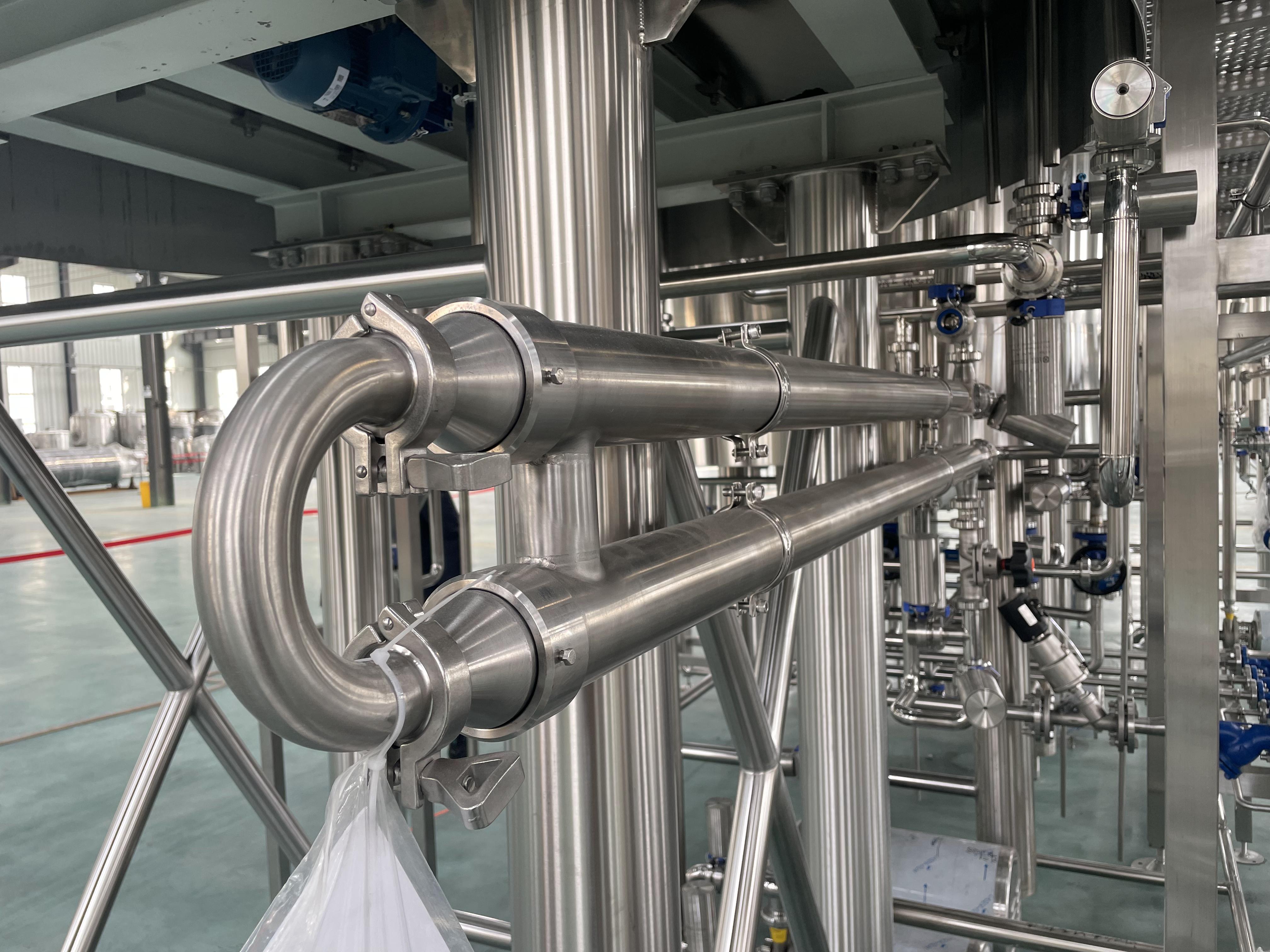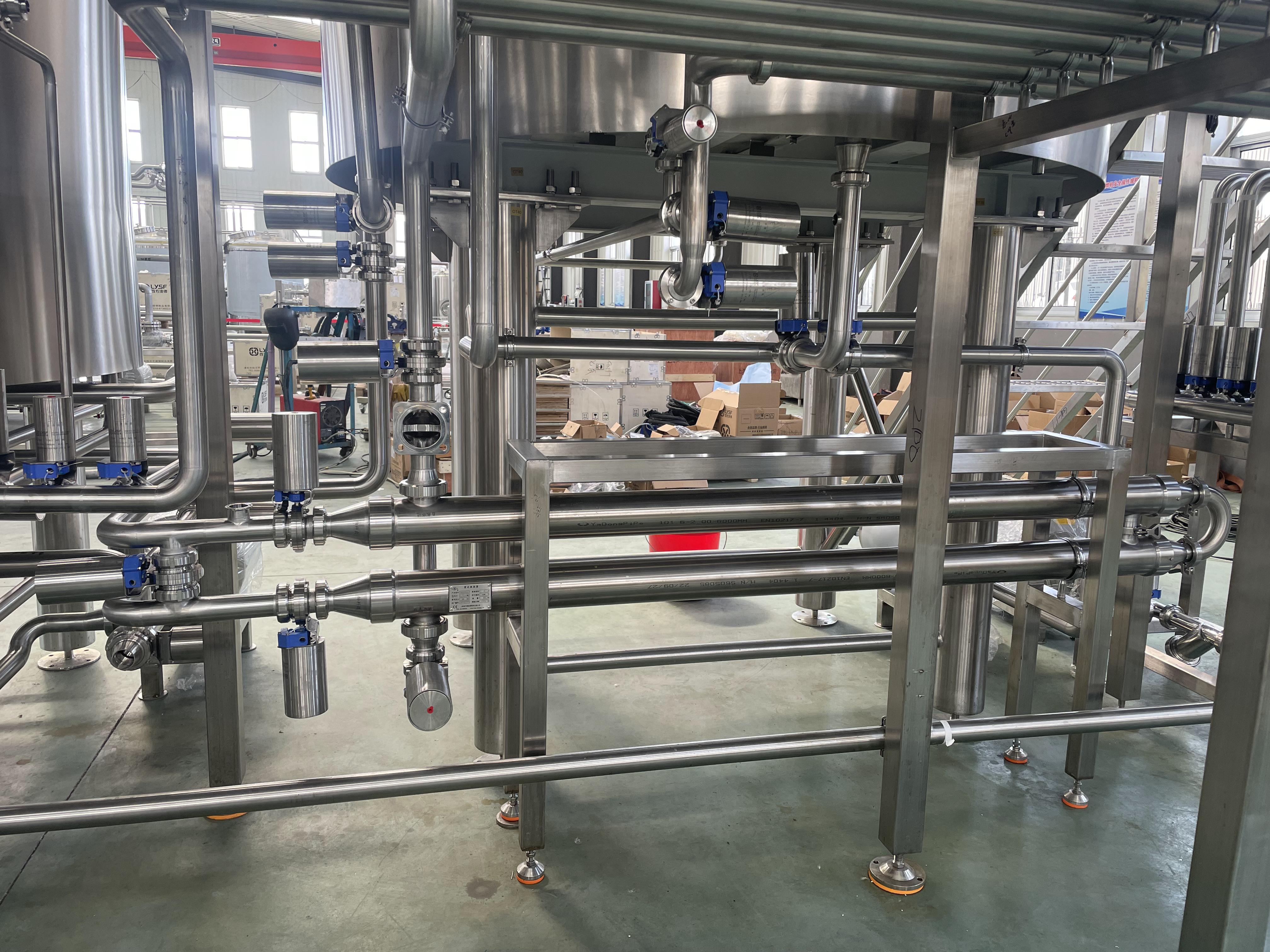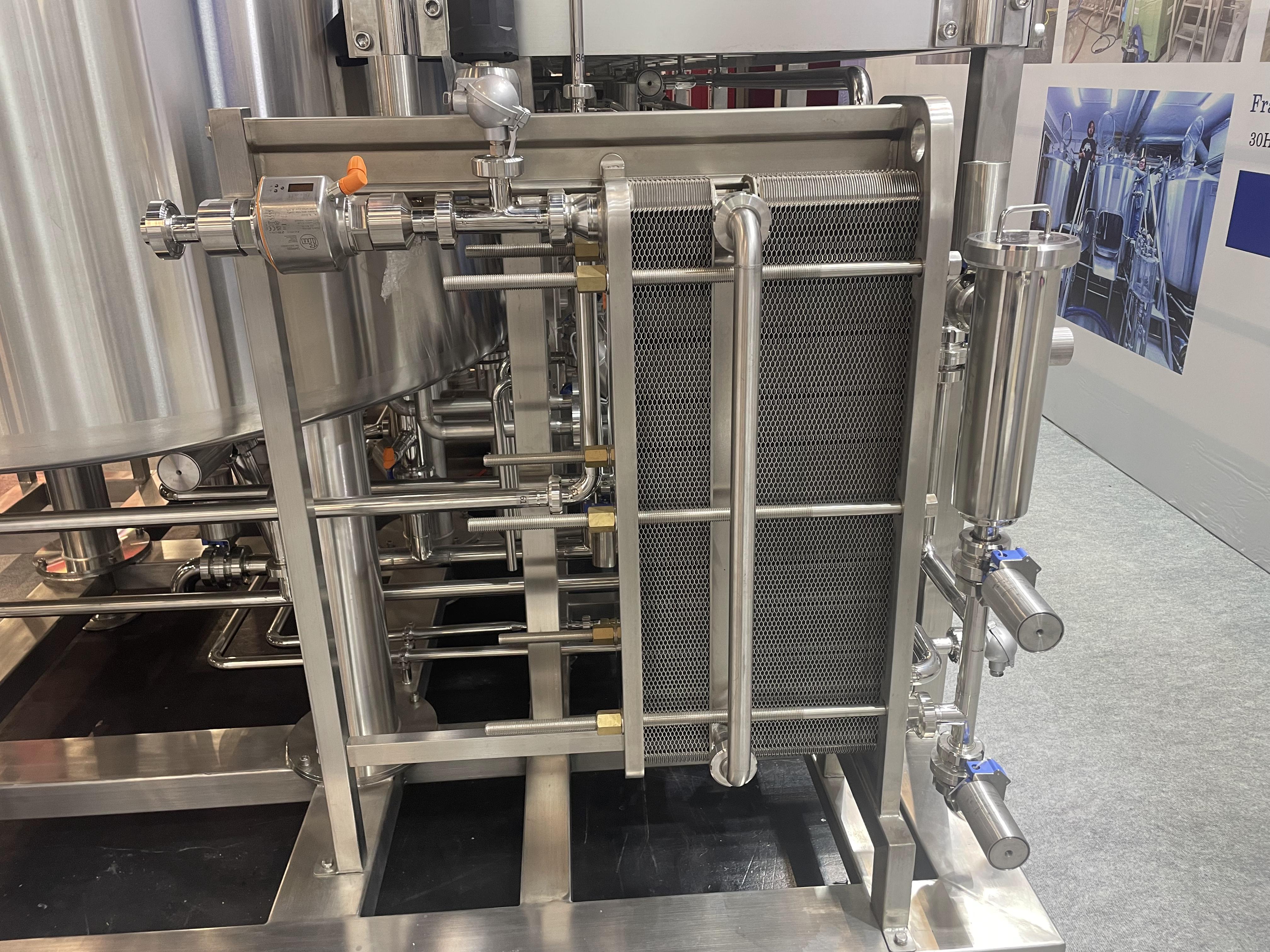Normally, there are two kinds of heat exchanger in brewery, the one is tubular heat exchanger, another one is plate heatin exchanger.
Firstly, A tubular exchanger is a type of heat exchanger with tubes encompassed in a shell. It is a very common device in industries where the focus is recovering heat from gas or liquids.
The principle of the shell and tube heat exchanger is based on a bundle of tubes that is arranged vertically or horizontally inside a so-called shell.
It works by exchanging heat between two fluids. One is the "heating" and the other is the "heated" fluid.
The fluids can be of various natures and the tubular exchanger can be used for the exchange of gas/gas, liquid/liquid, liquid/gas, etc.

The tubular heating exchanger using in brewery
-Tubular heat exchanger, To allow the a brewery to cool the wort before adding whirlpool hop additions. There's an external tubular heat exchanger to cool the wort going out and then back into the vessel. To cooling the wort sooner and get right temp for adding hops.
- As is well known, lowering the sedimentation temperature to around 80 degrees Celsius and adding hops is beneficial for the preservation of hop oil. At this temperature, the degree of isomerization of alpha valproic acid in hops will be very low, so it will not increase the bitterness of beer. At this temperature, the amount of aromatic substances evaporated from hops will also be significantly reduced, and at this temperature, wort can effectively dissolve poorly soluble aromatic molecules. So this temperature is the optimal stage for swirling the hops.
However, when the boiled wort is transferred to the suspension tank, its temperature will be around 98 ° C. It takes quite long time to decrease the temp from 98 ° C to 80 ° C. Therefore, in order to improve brewing efficiency and control the wort temperature well, we have added a heat exchanger here.
- It will widely used in micro brewery, commercial brewery to improve the brewing efficiency.


Secondly, plate heating exchanger
Heat Exchanger, a piece of brewery equipment designed to quickly raise or lower the temperature of wort or beer. Heat exchangers in breweries are often referred to as “plate heat exchangers” because they are built as a series of plates; a hot liquid flows along one side of the plate and cold liquid flows along the other side. A heat exchange takes place across the plates.
The most common heat exchanger is found in the brewhouse. Hot wort at approximately 95°C is run through a heat exchanger, where it is cooled by cold water and/or a refrigerant coming along the reverse side of the plate in the opposite direction. The wort becomes cool (e.g., to 12°C) and ready for fermentation, and the cold water is heated to perhaps 80°C and is returned to a hot water tank, ready to be used in the next brew or elsewhere in the brewery. On average, heat exchangers will be sized so that the entire contents of the kettle can be cooled to fermentation temperature in 45 min or less.
A heat exchanger is very energy efficient because the heat originally used to bring wort to the boil is partially reused to heat cold water coming into the brewery. Using refrigerants such as glycol, plate heat exchangers can also be used to cool beer to low temperatures after fermentation, say from 12°C to –1°C, for cold maturation.
Heat exchangers may be used in many aspects of the brewing process to heat and cool beer and to heat or cool liquids such as water. Although plate heat exchangers are the most common, other designs of heat exchanger may be used, such as a “shell and tube heat exchanger.”
Heat exchangers are also used as part of the makeup of flash pasteurization units, which heat beer quickly to pasteurize it, hold it for a short period as it flows through pipework, and then quickly decrease the temperature again.

Post time: Mar-18-2024

